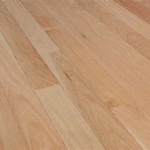Painting Concrete Basement Floor Ideas: A Comprehensive Guide
Concrete basement floors, while offering durability and affordability, often present a utilitarian and aesthetically unappealing surface. Painting a concrete basement floor provides an accessible and cost-effective way to enhance its appearance, protect it from moisture and wear, and even increase the value of a property. This article explores various painting ideas and considerations for transforming a drab concrete basement floor into a more attractive and functional space.
Before embarking on any painting project, preparation is paramount. A poorly prepared surface will lead to paint failure, resulting in peeling, cracking, and an overall unsatisfactory outcome. A thorough cleaning and proper surface preparation are essential for ensuring optimal paint adhesion and longevity.
The first step is to remove all furniture, boxes, and other items from the basement floor. This provides unrestricted access to the entire surface and prevents contaminants from interfering with the cleaning and painting process. Next, sweep or vacuum the floor to remove loose debris, dust, and dirt. A shop vacuum is particularly effective for removing fine particles from the porous concrete surface.
Following the initial cleaning, inspect the floor for any cracks, holes, or other imperfections. Small cracks can be filled with a concrete patching compound, while larger cracks may require more extensive repair. It is important to allow the patching compound to fully cure according to the manufacturer's instructions before proceeding with painting.
Once any necessary repairs have been completed, the floor should be thoroughly cleaned with a concrete cleaner or degreaser. These specialized cleaners are designed to remove oil, grease, and other contaminants that can inhibit paint adhesion. Follow the manufacturer's instructions for application and rinsing. A pressure washer can be used for larger areas, but it is important to exercise caution to avoid damaging the concrete surface. Always allow the floor to dry completely before proceeding to the next step.
After the floor is clean and dry, etching the concrete surface is crucial. Etching opens the pores of the concrete, creating a rougher surface that allows the paint to adhere more effectively. This can be achieved using muriatic acid or a commercial concrete etching product. When using muriatic acid, it is essential to wear appropriate safety gear, including eye protection, gloves, and a respirator. Follow the manufacturer's instructions carefully and ensure adequate ventilation. After etching, thoroughly rinse the floor with water and allow it to dry completely before painting.
Priming the concrete floor is another critical step in preparing the surface for painting. A primer helps to seal the concrete, improve paint adhesion, and prevent moisture from seeping through the floor. Choose a primer that is specifically designed for concrete surfaces and follow the manufacturer's instructions for application. Allow the primer to dry completely before applying the paint.
Selecting the Right Paint for Concrete Basement Floors
Choosing the appropriate paint for a concrete basement floor is essential for achieving a durable, long-lasting, and aesthetically pleasing finish. Several types of paint are suitable for concrete floors, each with its own advantages and disadvantages.
Acrylic latex paint is a popular choice for basement floors due to its affordability, ease of application, and availability in a wide range of colors. It is also water-based, making it easy to clean up. However, acrylic latex paint is not as durable as some other options and may not be suitable for high-traffic areas or areas that are exposed to moisture.
Epoxy paint is a two-part coating that provides excellent durability and resistance to chemicals, stains, and abrasions. It is often used in garages, workshops, and other areas where heavy use is expected. Epoxy paint is more expensive than acrylic latex paint and requires more careful preparation and application. It also has a limited pot life, meaning that it must be used within a certain time frame after being mixed.
Polyurethane paint offers a combination of durability and flexibility, making it a good choice for basement floors that are subject to temperature fluctuations or movement. It is also resistant to UV light, which can prevent fading and discoloration over time. Polyurethane paint is typically more expensive than acrylic latex paint but offers better performance in demanding environments.
Concrete stain is another option for coloring a concrete basement floor. Unlike paint, which forms a film on the surface, concrete stain penetrates the concrete and reacts with it to create a permanent color. Concrete stain can be acid-based or water-based and is available in a variety of colors and finishes. It is a good choice for those who want a more natural look and feel but may not provide as much protection as paint.
When selecting a paint or stain for a concrete basement floor, it is important to consider the specific needs of the space. Factors to consider include the level of traffic, the potential for moisture exposure, the desired aesthetic, and the budget. Always read and follow the manufacturer's instructions for application and maintenance.
Creative Painting Design Ideas for Concrete Basement Floors
Beyond selecting the right type of paint, the aesthetic design is crucial to transforming a concrete basement floor into an appealing space. The painting design can create visual interest, define areas, and complement the overall décor of the basement.
Solid color painting offers a simple yet effective way to update a concrete basement floor. Choosing a light color, such as gray, beige, or white, can help to brighten the space and make it feel larger. Darker colors can add warmth and sophistication but may make the basement feel smaller. Consider the overall color scheme of the basement and choose a paint color that complements the existing furnishings and décor.
Applying a decorative pattern can dramatically enhance the visual appeal of a concrete basement floor. Stencils can be used to create intricate designs, such as geometric patterns, floral motifs, or even custom logos. These can be purchased pre-made or created customized. Stencils ensure a precise and consistent application of the selected design, resulting in a professional-looking outcome.
Another design option is to create a faux finish on the concrete floor. This involves using different painting techniques to mimic the appearance of other materials, such as marble, wood, or stone. Faux finishes can add texture and depth to the floor and create a unique and personalized look. Techniques such as sponging, rag rolling, and color washing can be employed to achieve various faux finishes. Experimentation and practice are recommended before applying a faux finish to the entire floor.
Creating distinct zones within the basement by using different colors or patterns for different areas. For example, a game area could be painted in a bold color, while a lounge area could be painted in a more subdued tone. This helps to visually separate the different functions of the basement and create a more cohesive and organized space.
Adding a textured finish to the concrete floor can provide both visual interest and improved traction. Textured paints and coatings are available in a variety of textures, from subtle to more pronounced. These finishes can help to prevent slips and falls, particularly in areas that are prone to moisture. Textured finishes can also hide imperfections in the concrete surface.
Incorporating metallic accents into the painting design can add a touch of glamour and sophistication to the basement floor. Metallic paints and powders can be used to highlight certain areas or create subtle shimmer effects. Metallic accents work well with both solid color and patterned designs.
Sealing the painted concrete floor is the final step in protecting the finish and ensuring its longevity. A clear sealant will help to prevent scratches, stains, and wear. Choose a sealant that is compatible with the type of paint used and follow the manufacturer's instructions for application. Reapply the sealant periodically as needed to maintain the floor's appearance and protection.
Practical Considerations for Painting Concrete Basement Floors
In addition to preparation, paint selection, and design, there are several practical considerations to keep in mind when painting a concrete basement floor. These factors can impact the success of the project and the overall satisfaction with the finished product.
Moisture is a common problem in basements, and it is important to address any moisture issues before painting the floor. Excess moisture can cause paint to peel, blister, and fail. Check for any signs of water damage, such as stains, mold, or efflorescence (a white, powdery deposit). If moisture is present, identify and address the source of the problem before painting. This may involve repairing leaks, improving drainage, or installing a dehumidifier.
Proper ventilation is essential when painting a concrete basement floor, particularly when using paints or coatings that contain volatile organic compounds (VOCs). Open windows and doors to allow for fresh air circulation. Use fans to help circulate the air and remove fumes. Wear a respirator to protect yourself from inhaling harmful vapors.
The temperature and humidity levels in the basement can also affect the painting process. Paint typically dries best in moderate temperatures and low humidity. Avoid painting on days when the temperature is too hot or too cold, or when the humidity is high. Check the manufacturer's instructions for the recommended temperature and humidity ranges for the paint being used.
Allow ample time for the paint to dry completely before walking on the floor or placing furniture on it. The drying time will vary depending on the type of paint used, the temperature, and the humidity. Follow the manufacturer's instructions for the recommended drying time. Avoid rushing the drying process, as this can lead to a soft, sticky, or uneven finish.
Maintaining a painted concrete basement floor is relatively easy. Regular sweeping and mopping will help to keep the floor clean and free of debris. Use a mild detergent and avoid harsh chemicals or abrasive cleaners, as these can damage the paint. Promptly clean up any spills to prevent staining. Consider using floor mats or rugs in high-traffic areas to protect the paint from wear.
By carefully considering these practical factors, the likelihood of achieving a successful and long-lasting painted concrete basement floor is increased, transforming an otherwise unappealing space into a more attractive and functional area.

Cool Basement Floor Paint Ideas To Make Your Home More Amazing Painted Floors Painting Flooring

7 Ingenious Painted Flooring Ideas For An Unfinished Basement

How To Paint A Concrete Floor Southern Hospitality

House And Home Stead Basement Floors Painting Makeover Remodeling

Basement Floor Paint Options Hgtv

Painted Concrete Floors Pros Cons Ideas How To Tips Network

Diy Painted Basement Concrete Floor In The House Of David

30 Perfect Basement Concrete Floor Paint Color Ideas Painting Floors Flooring Options

How To Paint A Concrete Floor In Basement Twofeetfirst

Epoxy Paint And Your Waterproofed Basement Floors Tom S Waterproofing Inc








